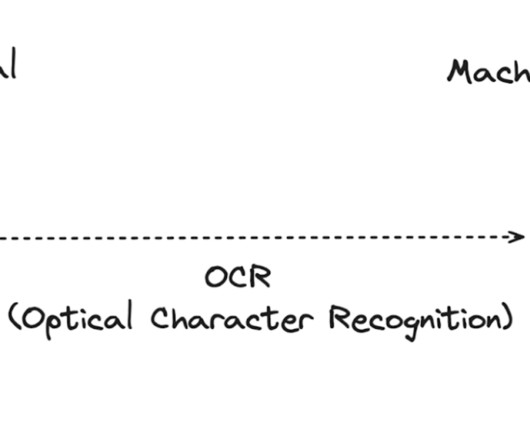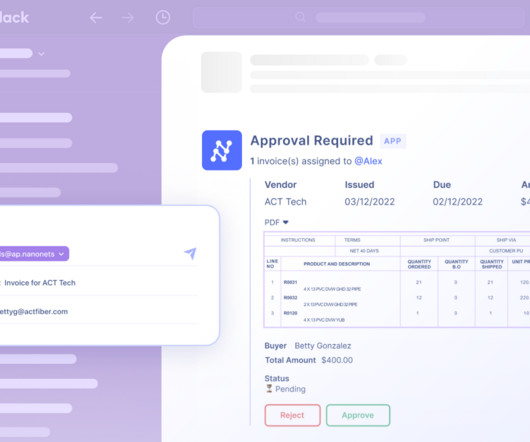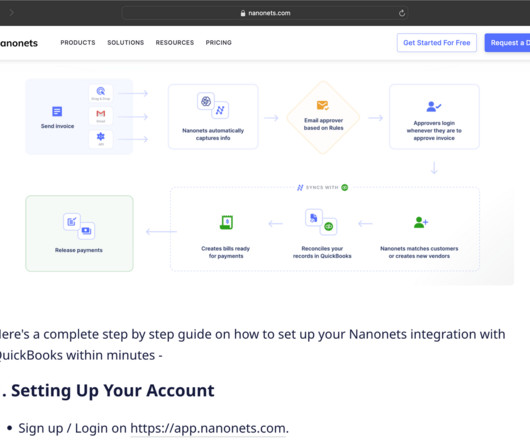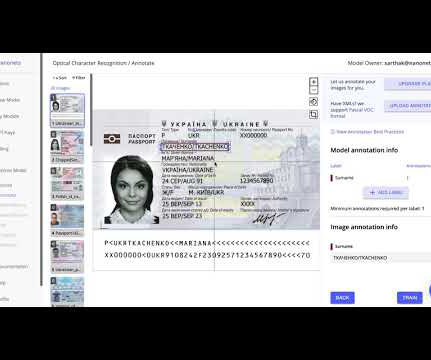How to set up financial document automation
Nanonets
SEPTEMBER 18, 2024
From multinational banks and big accounting firms to local insurance agencies and small healthcare providers, businesses of all sizes process hundreds and thousands of financial documents daily. The sheer volume of paperwork can be overwhelming, time-consuming, and prone to errors.





















Let's personalize your content